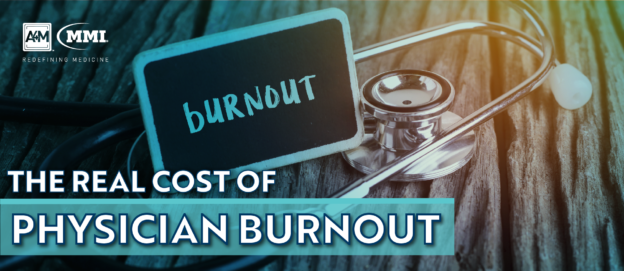In recent years, leading health care organizations have declared physician burnout, or the state of physical and mental exhaustion associated with job stress, a public health crisis. The problem is so pervasive that burnout was added to the list of medical conditions by the World Health Organization in May of this year. Compared to average American workers, physicians are experiencing twice as much burnout, which may lead to high turnover, lower-quality care, and suboptimal patient outcomes. In addition to raising significant ethical concerns, overworked and unhappy physicians are taxing on the U.S. economy, costing the nation $4.6 billion per year, according to new research published in the Annals of Internal Medicine.
Physician Burnout
Earlier studies have found high rates of burnout among doctors, especially once compared with other professions. Physician burnout is becoming increasingly more common, affecting over half of practicing physicians in 2014 compared to 46% in 2011. The vast number of patients, amount of tedious documentation, and the rigorously structured and regulated work environment are all factors contributing to the growing number of burnt out physicians.
The trend shows no signs of slowing down. According to Medscape’s 2019 National Physician Burnout Report an estimated 44% of physicians suffer from burnout, 11% are colloquially depressed, and 4% are clinically depressed. As a shortage of physicians in the U.S. looms over the healthcare system, rates of burnout are expected to increase exponentially.
Economic Burden of Physician Burnout
Alongside detrimental effects on doctors themselves, physician burnout has the potential to substantially increase costs for both patients and the healthcare system. Reduced clinical hours, physician turnover, and staffing troubles are only some of the negative clinical and organizational outcomes associated with burnout, however, the economic burden it entails remains unclear. Thus, leaders in healthcare are not able to properly assess the financial benefits tied to programs that alleviate burnout syndrome in their employees.
Published in June 2019 in the Annals of Internal Medicine, a study aimed to estimate burnout-associated costs at a national and organizational level. Using a cost-consequence analysis mathematical model, the team of researchers evaluated the fiscal ramifications of physician turnover and the decrease in work hours associated with burnout.
The results indicate that approximately $4.6 billion in costs are attributable to physician burnout each year, at a national level. At an organizational level, economic costs of burnout associated with turnover and reduced clinical hours totaled $7,600 per employed physician annually. Both statistics indicate the financial benefit of burnout reduction programs.
Shift Toward New Business Models
Due to lacking organizational expenditures and policies, physicians are turning away from the traditional healthcare model and toward new business models that show promise of decreased stress and improved work-life balance. An alternative model of healthcare called direct primary care is being increasingly adopted by doctors who would have otherwise left their medical practice.
Physicians turning to direct primary care manage the health of fewer patients, allotting more time for each individual and thus, optimizing health outcomes. Rather than treating over 2,000 patients, physicians oversee between 500 and 1,000 patients in this model. Further research is being conducted to alleviate the tedious tasks that preoccupy many doctors in both traditional and alternative healthcare models.
For a monthly fee, patients under direct primary care are able to receive basic checkups, same-day and next-day appointments, as well as medications and lab tests at wholesale prices. Direct primary care is not covered by insurance however, the cost-effectiveness associated with no copays or urgent care visits is favored by many. In addition, the model includes the ability to virtually contact physicians when in-person visits are unfeasible.
Alleviating an increasingly burnt out population of physicians is a necessary step toward improving the health care system as well as patient outcomes on a national level. Proactive mental health treatment, support for burnout sufferers, and improvements in organizational systems are needed to help combat this public health crisis. As more and more research has revealed, burnout reduction programs and policies would result not only in substantial economic benefits, but also in a happier population of physicians.

